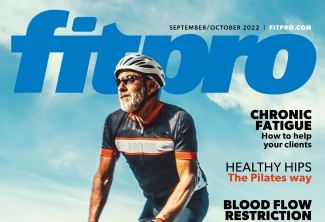Magazine References
Sep – Oct 2022

Pp 6-7 Let your brain do the walking
References
- Erickson K et al (2011), Exercise training increases size of hippocampus and improves memory, PNAS, 108(7): 3,017-22.
- Stone J et al (2015), The mechanical cause of age-related dementia (Alzheimer’s Disease: the brain is destroyed by the pulse), J Alzheimer’s Dis., 44(2): 355-373.
- Novak C et al (2005), Central orexin sensitivity, physical activity and obesity in diet induced obese and diet resistant rates, American Journal of Physiology, Endocrinology and Metabolism.
- Novak C (2012), The use of a running wheel to measure activity in rodents: Relationship to energy balance, general activity and reward, Neuro Biobehav Rev., 36(3): 1,001-14.
Pp 8-10 Your ultimate guide to CBD
References
- Zou et al (2011), Cannabinoid receptors and the Endocannabinoid system: Signalling and function in the central nervous system, Neuropsychopharmacology, 36(6): 1,219-26.
- Black et al (2019), Cannabinoids for the treatment of mental disorders and symptoms of mental disorders: A systematic review and meta-analysis, Lancet Psychiatry, 6: 995-1010.
- White et al (2019), A review of human studies assessing cannabidiol’s (CBD) therapeutic actions and potential, The Journal of Clinical Pharmacology, 59(7): 923-34.ViPR Global LMT 1 online/live course (whole-body strength using myofascial lines).
- Khan R et al (2020), The therapeutic role of Cannabidiol in mental health: A systematic review, Journal of Cannabis Research, 2: 2/10.1186
- Lucas E (2019), Cannabidiol in the treatment of post-traumatic stress disorder. A case series, JACM, 10: 1,089.
- Bergamaschi M et al (2011), Cannabidiol reduces the anxiety induced by simulated public speaking in treatment-naive social phobia patients, Neuropsychopharmacology, 36: 1,219-26.
- Moltke J et al (2021), Reasons for cannabidiol use: A cross-sectional study of CBD users, focusing on self-perceived stress, anxiety and sleep problems, Molte and Hindocha Journal of Cannabis Research, 3: 5.
- Atalay S et al (2020), Antioxidative and anti-inflammatory properties of cannabidiol, Antioxidants (Basel), 9(1): 21.
- Bonn-Miller et al (2017), Labelling accuracy of cannabidiol extracts sold online. Research Letter, JAMA, 318(17).
Pp 12-15 Working with clients with chronic fatigue
References
- Stadie R, Dornieden K, Baum E et al (2016), The differential diagnosis of tiredness: A systematic review, BMC Family Practice, 12(1): 1-11.
- McAteer A, Elliott AM and Hannaford PC (2011), Ascertaining the size of the symptom iceberg in a UK-wide community-based survey, British Journal of General Practice, 61(582): 1-11.
- https://cks.nice.org.uk/topics/tiredness-fatigue-in-adults/background-information/prevalence/, accessed on 23 August 2022.
- Galland-Decker C, Marques-Vidal P and Vollenweider P (2019), Prevalence and factors associated with fatigue in the Lausanne middle-aged population: A population-based, cross-sectional survey, BMJ Open, 9(8): 1-10.
- Nicholson K, Steward M and Thind A (2015), Examining the symptom of fatigue in primary care: A comparative study using electronic medical records, Journal of Innovation and Health Information, 22(1): 235-243.Joint FAO/WHO expert consultation on the risks and benefits of fish consumption (2010), Report of the Joint FAO/WHO Expert Consultation on the Risks and Benefits of Fish Consumption. rome, 25029 january 2010, accessed on 14 September 2021.
- https://www.facit.org/measures/FACIT-F, accessed on 23 August 2022.
- Larun L, Brurberg KG, Odgaard-Jensen J, Price JR (2019), Exercise therapy for chronic fatigue syndrome. Cochrane Database of Systematic Reviews, Issue 10. Art. No.: CD003200. DOI: 10.1002/14651858.CD003200.pub8.
- Reid S et al (2008), Chronic fatigue syndrome, search date September 2007. Online version of BMJ Clinical Evidence. Also available online: http://www.clinicalevidence.com.
- Chalder T, Goldsmith KA, White PD, Sharoe M, Pickles AR (2015), Rehabilitative therapies for chronic fatigue syndrome: a secondary mediation analysis of the PACE trial, Lance Psychiatry, http://dx.doi.org/10.1016/ S2215-0366(14)00069-8
- Van Cauwengergh D, De Kooning M, Ickmans K, Nijs J (2012), How to exercise people with chronic fatigue syndrome: Evidence-based practice guidelines, Eur J Clin Invest., 42(10): 1136-44.
- American College of Sports Medicine, Riebe D, Ehrman JK, Liguori G, & Magal M (2018), ACSM’s Guidelines for Exercise Testing and Prescription (10th edition), Philadelphia: Wolters Kluwer.
- American College of Sports Medicine, Moore GE, Durstine JL, Painter PL (2016), ACSM’s Exercise Management for Persons with Chronic Diseases and Disabilities (4th edition), Champaign, Il: Human Kinetics.
- https://meassociation.org.uk/tag/graded-exercise-therapy/, accessed on 23 August 2022.
Pp 16-17 Work smarter, not harder: Seven ways to be more effective when you work
References
- John Pencavel (2015), The productivity of working hours, The Economic Journal, 125(589): 2052-76, https://doi.org/10.1111/ecoj.12166
- Leroy S, Schmidt AM (2016), The effect of regulatory focus on attention residue and performance during interruptions, Organizational Behavior and Human Decision Processes, 137: 218-235.
Pp 18-21 Blood flow restriction training
References
- Patterson SD, Hughes L, Warmington S, Burr J, Scott BR, Owens J, Abe T, Nielsen JL, Libardi CA, Laurentino G, Neto GR, Brandner C, Martin-Hernandez J, Loenneke J (2019), Blood flow restriction exercise: Considerations of methodology, application, and safety, Frontiers in Physiology, 10: 533.Finch CF, White P, Dennis R, Twomey D, Hayen A (2010), Fielders and batters are injured too: a prospective cohort study of injuries in junior club cricket, Journal of Science and Medicine in Sport, 13(5): 489-95.
- Grønfeldt BM, Lindberg Nielsen J, Mieritz RM, Lund H, Aagaard P (2020), Effect of blood-flow restricted vs heavy-load strength training on muscle strength: Systematic review and meta-analysis,Scandinavian Journal of Medicine & Science in Sports, 30(5): 837-848.Worthington P, King M, Ranson C (2013), The influence of cricket fast bowlers’ front leg technique on peak ground reaction forces, Journal of Sports Sciences, 31(4): 434-41.
- Wortman RJ, Brown SM, Savage-Elliott I, Finley ZJ, Mulcahey MK (2021), Blood flow restriction training for athletes: A systematic review, The American Journal of Sports Medicine, 49(7): 1,938-44.Soomro N, Hackett D, Freeston J, Blanch P, Kountouris A, Dipnall J, Lyle D, Sanders R (2018), How do Australian coaches train fast bowlers? A survey on physical conditioning and workload management practices for training fast bowlers, International Journal of Sports Science & Coaching, 13(5): 761-70.
- Yamanaka T, Farley RS, Caputo JL (2012), Occlusion training increases muscular strength in division IA football players, Journal of Strength and Conditioning Research, 26(9): 2,523-29.
- Wilk M, Krzysztofik M, Filip A, Zajac A, Bogdanis GC, Lockie RG (2020), Short-term blood flow restriction increases power output and bar velocity during the bench press, Journal of Strength and Conditioning Research, epub before print.
- Bennett H, Slattery F (2019), Effects of blood flow restriction training on aerobic capacity and performance: A systematic review, Journal of Strength and Conditioning Research, 33(2): 572-83.
- Arriel RA, Rodrigues JF, Souza H, Meireles A, Leitão L, Crisafulli A, Marocolo M (2020), Ischemia-reperfusion intervention: From enhancements in exercise performance to accelerated performance recovery-a systematic review and meta-analysis, International Journal of Environmental Research and Public Health, 17(21): 8,161.
- Anecdotal evidence from professional athletes using Hytro in Premier League football, Premiership rugby, Formula 1, and boxing.
- Leonekke P, Wilson J, Wilson G et al (2011), Potential safety issues with blood flow restriction training, Scand J Med Sports, 21: 510-18.
- Dhokia B, Mabin EO, Bradley WJ et al (2022), The feasibility, safety, and efficacy of upper limb garment-integrated blood flow restriction training in healthy adults, Pilot Feasibility Stud, 8: 34.
Pp 29-31 Exercise and the prevention of Alzheimer’s
References
- De la Rosa A et al (2020), Physical exercise in the prevention and treatment of Alzheimer’s disease, J Sport Health Sci.
- Gallaway PJ et al (2017), Physical activity: A viable way to reduce the risks of mild cognitive impairment, alzheimer’s disease and vascular dementia in older adults, Brain Sciences.
- Mosconi L et al (2021), Menopause impacts human brain structure, connectivity, energy metabolism, and amyloid-beta deposition, Nature Scientific Reports.
- Jia R et al (2019), Effects of physical activity and exercise on the cognitive function of patients with alzheimer’s disease: a meta-analysis, BMC Geriatrics.
- Voss MW et al (2010), Plasticity of Brain Networks in a Randomised Intervention Trial of Exercise Training in Older Adults, Front. Age Neurosi.
- Aron L et al (2022), The adaptive ageing brain, Curr Opin Neurobiol.
- Herold F et al (2019), Functional and/or structural brain changes in response to resistance exercises and resistance training lead to cognitive improvements: A systematic review, Eur Rev of Aging and Physical Activity.
- Leal LG et al (2018), Physical Exercise-Induced Myokines and Muscle-Adipose Tissue Crosstalk: A Review of Current Knowledge and the Implications for Health and Metabolic Diseases, Frontiers in Physiology.
- Broadhouse KM et al (2020), Hippocampal plasticity underpins long-term cognitive gains from resistance exercise in MCI, Neuroimage: Clinical.
- Leisman G et al (2016), Thinking, walking, talking: Integratory motor and cognitive brain function, Front Public Health.


